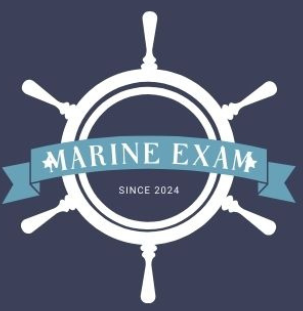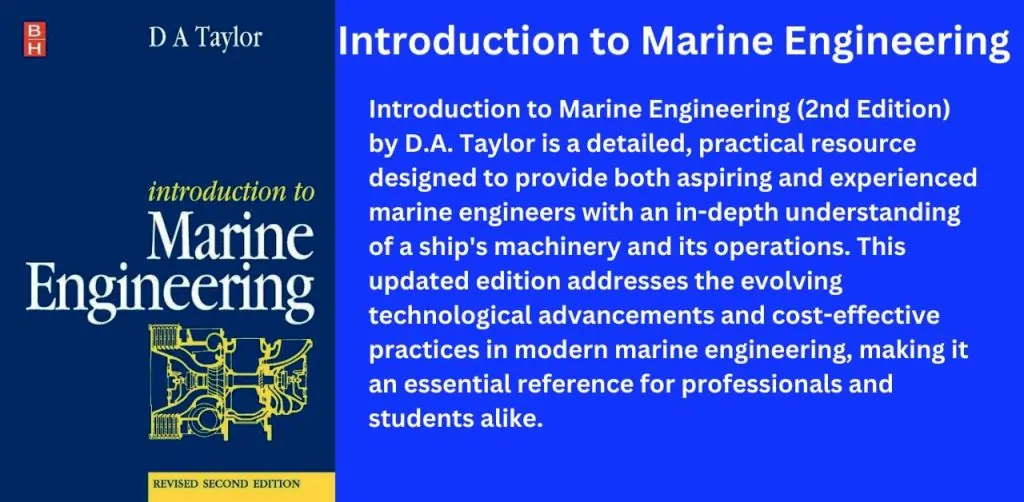Introduction to Marine Engineering
Author: D.A. Taylor
Format: Paperback
Overview:
Introduction to Marine Engineering (2nd Edition) by D.A. Taylor is a detailed, practical resource designed to provide both aspiring and experienced marine engineers with an in-depth understanding of a ship’s machinery and its operations. This updated edition addresses the evolving technological advancements and cost-effective practices in modern marine engineering, making it an essential reference for professionals and students alike.
Key Features:
1. Comprehensive Coverage of Ship Machinery
The book covers all critical aspects of a ship’s mechanical and electrical systems, including:
- Propulsion Systems: Detailed insights into marine propulsion, focusing on fuel-efficient and reliable engine operations.
- Steering Gear and Deck Machinery: Explains various systems involved in steering and handling cargo, with a focus on safety and operational efficiency.
- Electrical Equipment: Provides an overview of electrical power generation, distribution, and safety practices onboard vessels.
2. Focus on Cost-Effective Operations
The second edition emphasizes the increasing importance of cost-effective ship operations. It offers practical strategies for:
- Enhancing equipment reliability and minimizing downtime.
- Improving fuel efficiency through advanced engine technologies.
- Transitioning to automated machinery to reduce crew requirements while maintaining operational safety.
3. Alignment with Industry Standards
This book is aligned with international marine engineering standards and certification requirements, making it an invaluable study guide for:
- Class 4 and Class 3 Engineer’s Certificates of Competency
- First two years of the Engineer Cadet Training Scheme
- Engineering Knowledge syllabus for the Master’s Certificate
4. Safety and Maintenance Procedures
A strong emphasis is placed on proper safety protocols and maintenance practices to ensure safe and reliable vessel operations. Readers will gain a thorough understanding of:
- Routine maintenance schedules and troubleshooting techniques.
- Safe operation of machinery in compliance with industry regulations.
- Emergency procedures and hazard mitigation.
5. Updates in Modern Technology
This edition reflects the latest technological advancements in marine engineering, such as:
- Increased use of automated systems and remote monitoring.
- Integration of environmentally friendly technologies to meet emission regulations.
- Advanced diagnostic tools for predictive maintenance.
Why This Book Is Essential
- Practical Guidance: Offers step-by-step procedures and operational guidelines for marine engineers.
- Comprehensive Learning Resource: Suitable for students preparing for marine engineering certifications and professionals seeking to enhance their knowledge.
- Updated Content: Incorporates the latest trends and technologies, ensuring relevance to current industry practices.
Availability:
Introduction to Marine Engineering: 2nd Edition by D.A. Taylor is available for purchase on major online platforms, including Amazon and Barnes & Noble.
FAQs on Introduction to Marine Engineering
Q. Can it help with the Master’s Certificate syllabus?
Ans. Absolutely, it addresses key concepts for the Engineering Knowledge syllabus.
Q. What topics does the book cover?
Ans. Propulsion, electrical systems, steering gear, and deck machinery with a focus on safety and efficiency.
Q. Is it suitable for engineering cadets?
Ans. Yes, it’s ideal for Class 4 and Class 3 certificates and early cadet training.
Q. Does it include automated ship systems?
Ans. Yes, it covers the shift to automated machinery and its impact on operations.
Conclusion
Introduction to Marine Engineering by D.A. Taylor is more than just a reference—it’s a vital resource for mastering the complex systems that power modern ships. With its in-depth coverage of propulsion, steering, electrical systems, and automated machinery, the second edition equips both professionals and aspiring engineers with the skills to navigate today’s evolving maritime industry. Whether you’re optimizing fuel efficiency, ensuring safety, or preparing for competency exams, this comprehensive guide delivers the knowledge you need to excel in marine engineering. Dive into this essential text and take your expertise to the next level.

